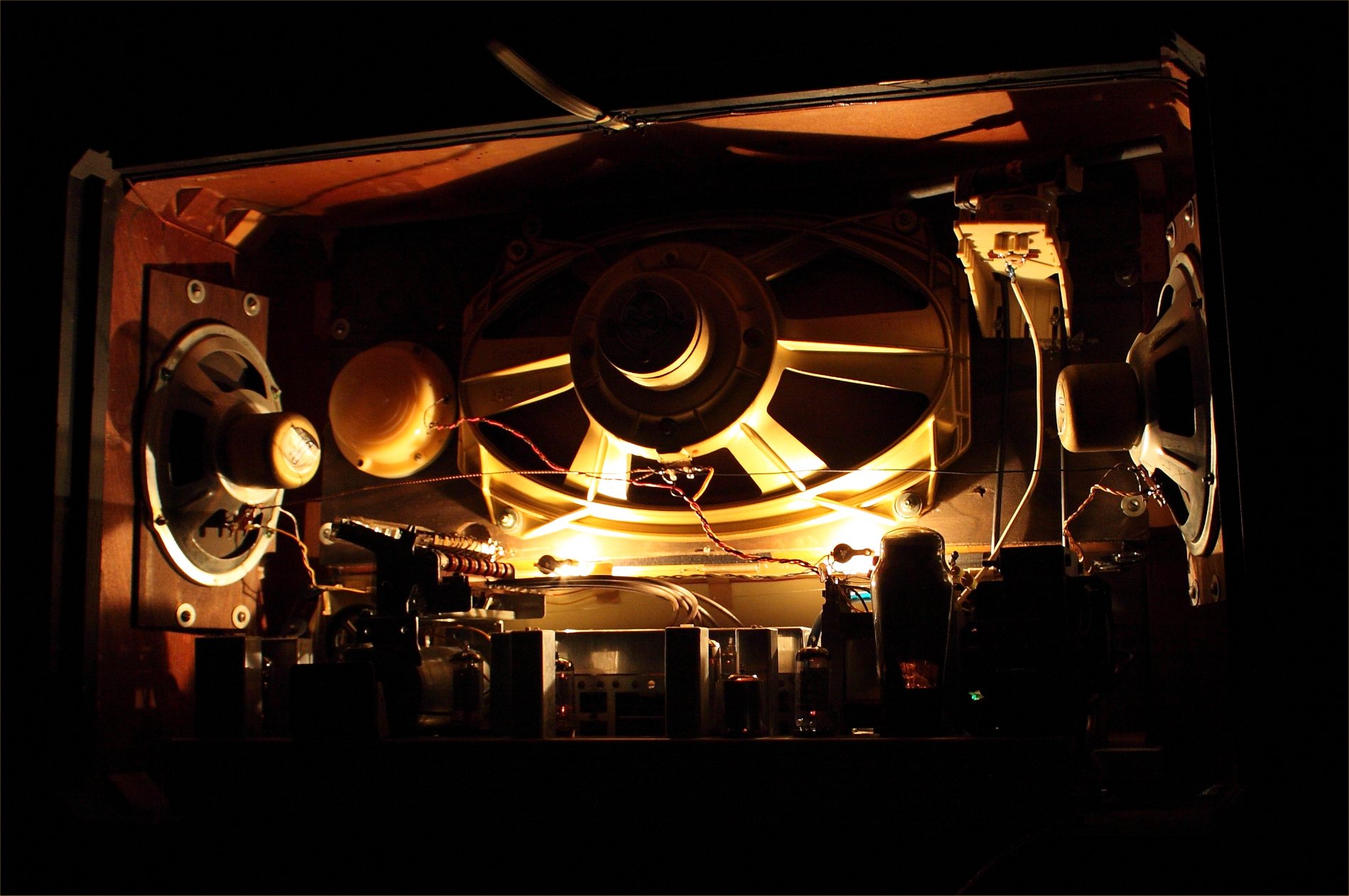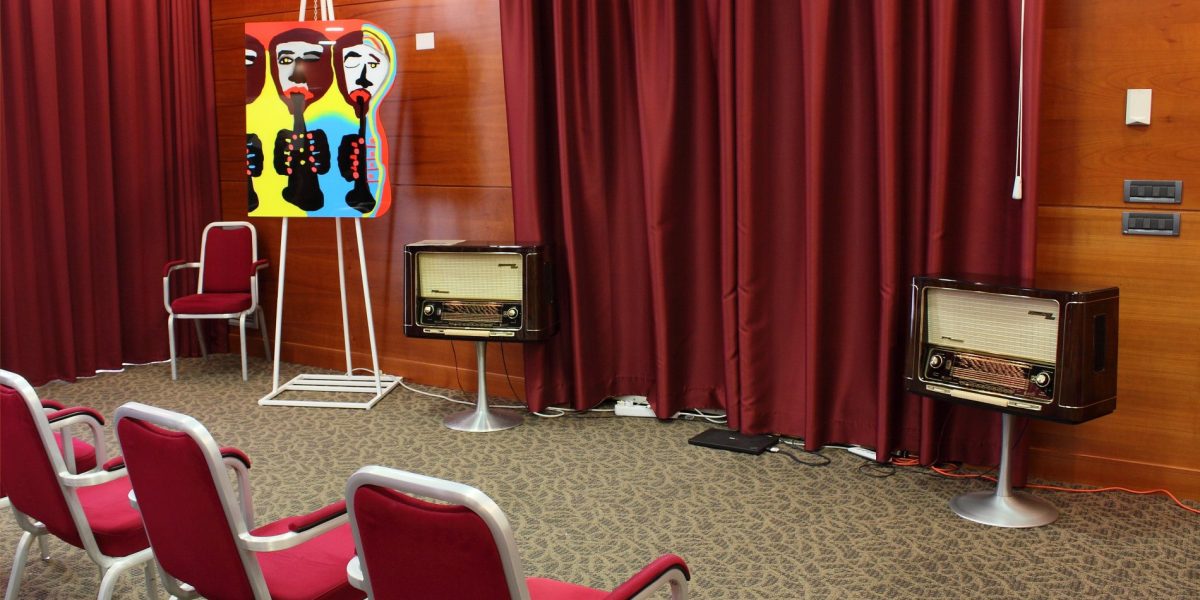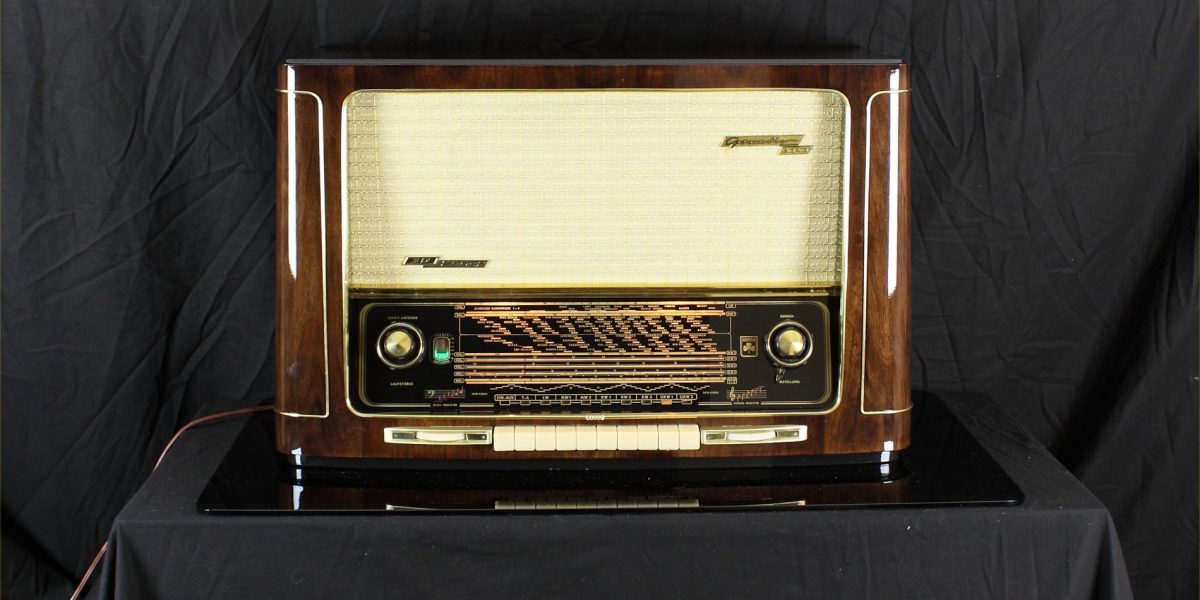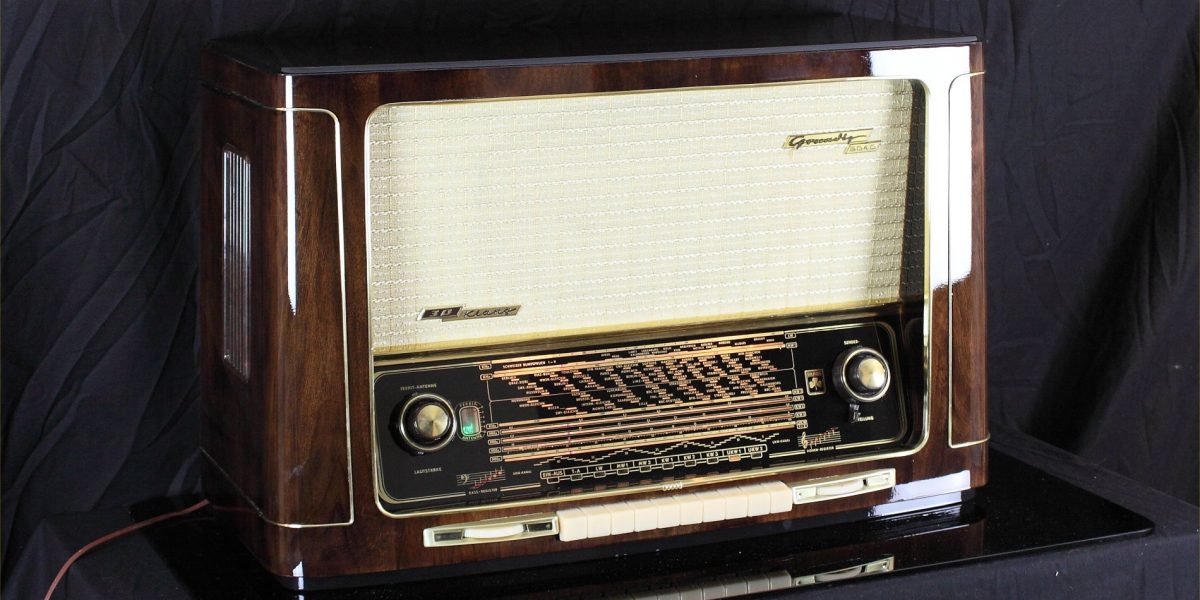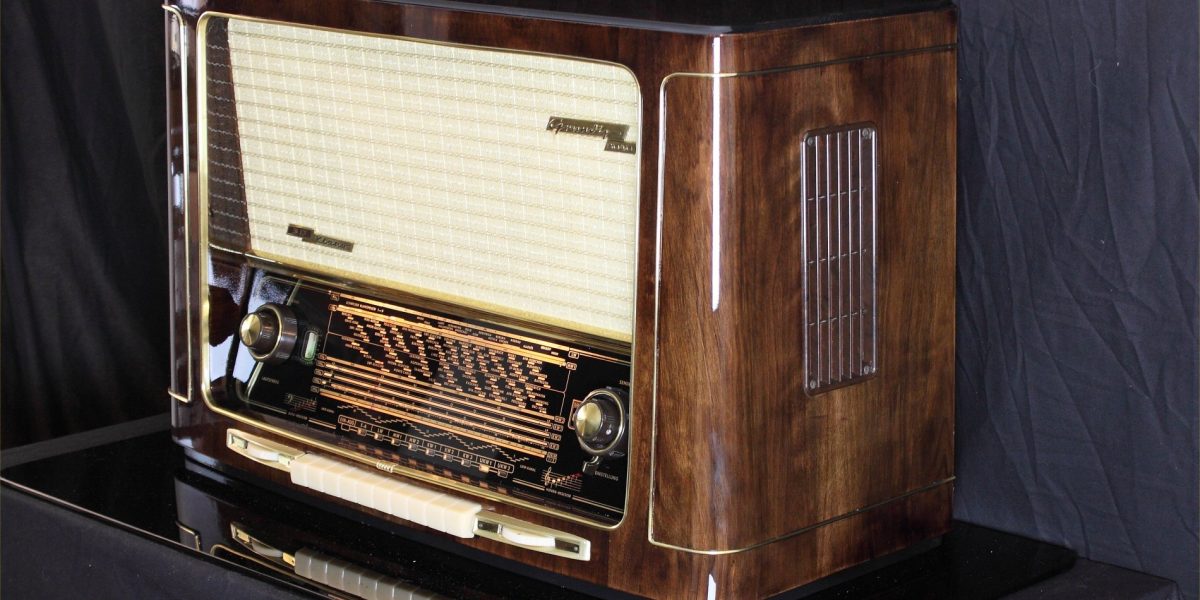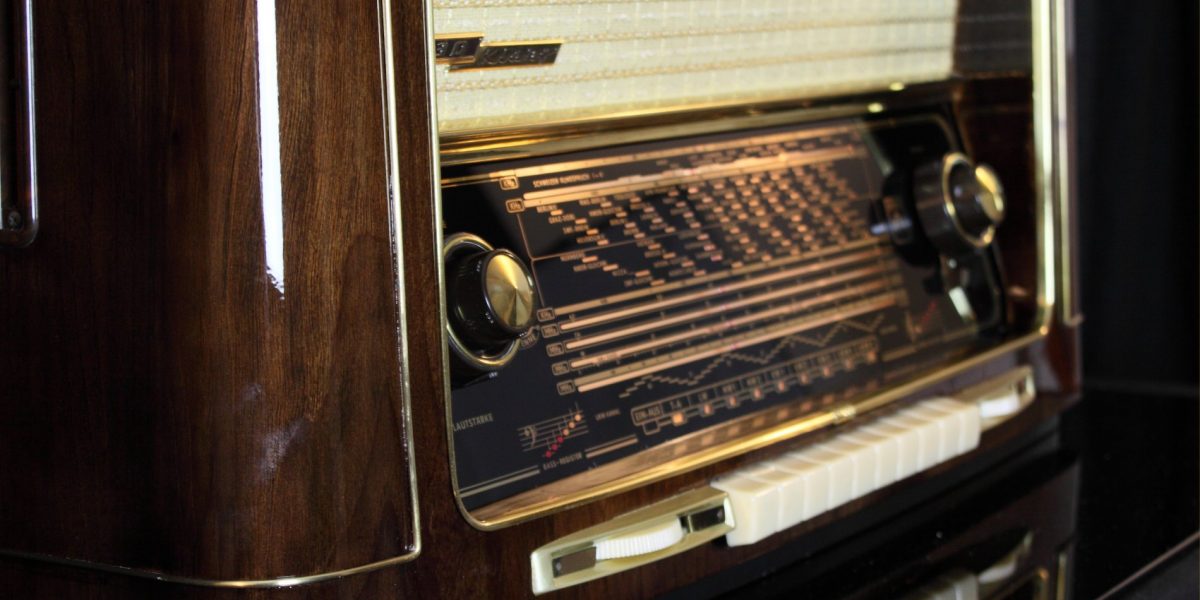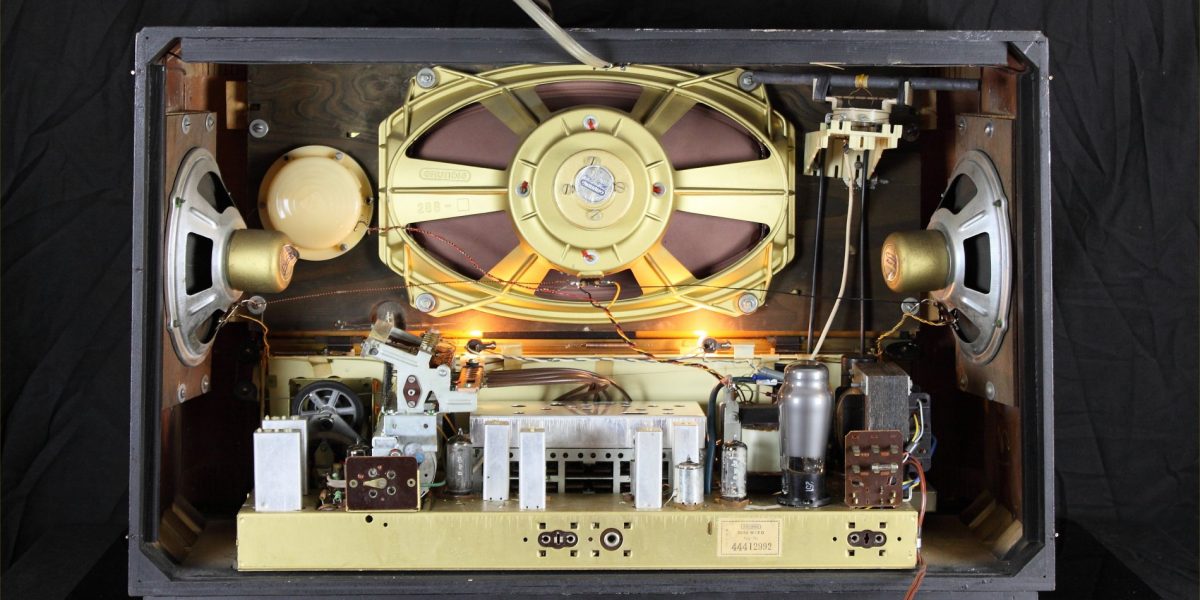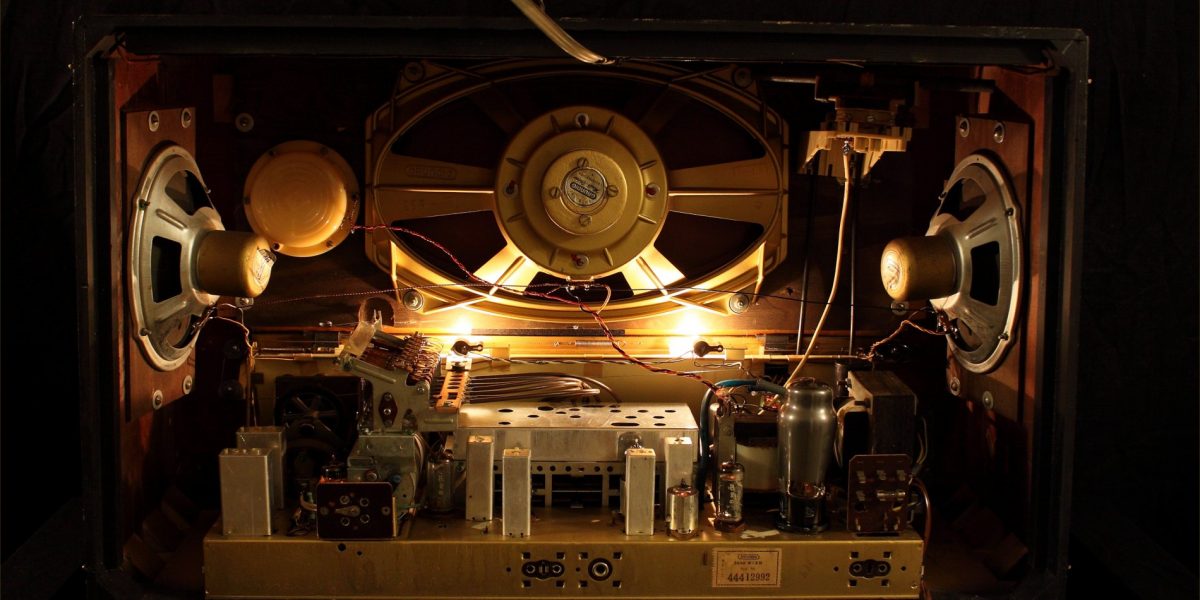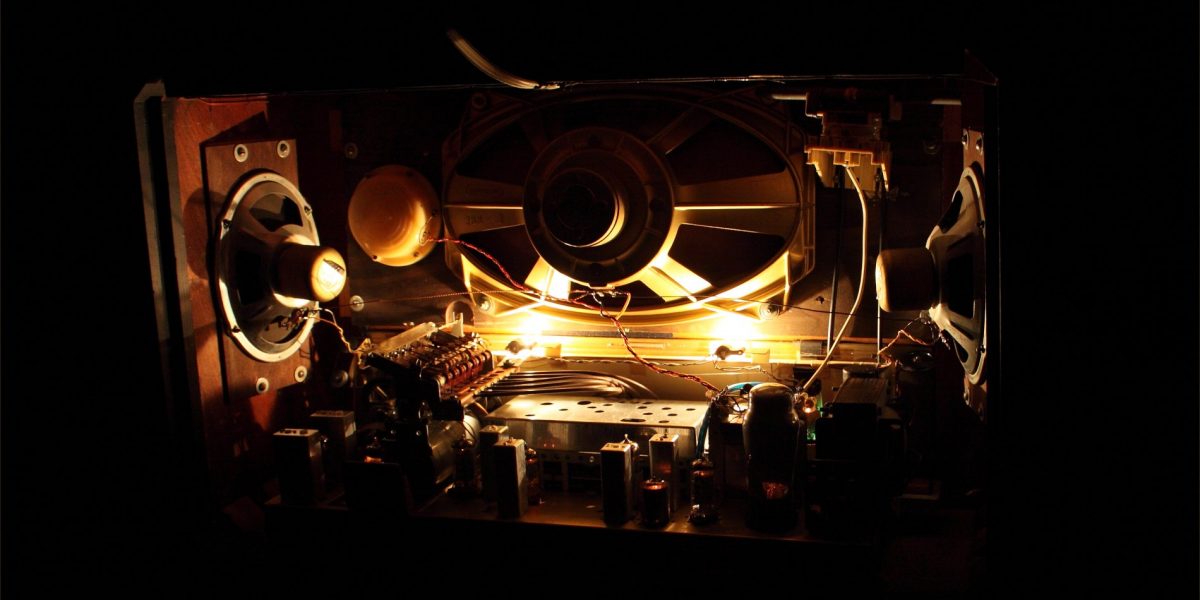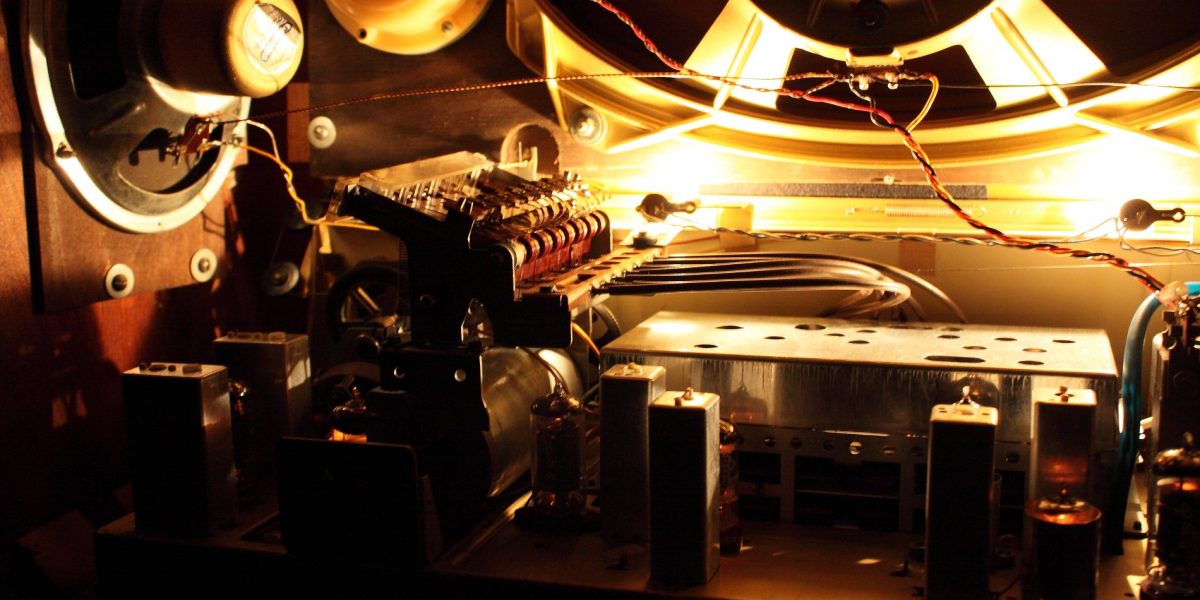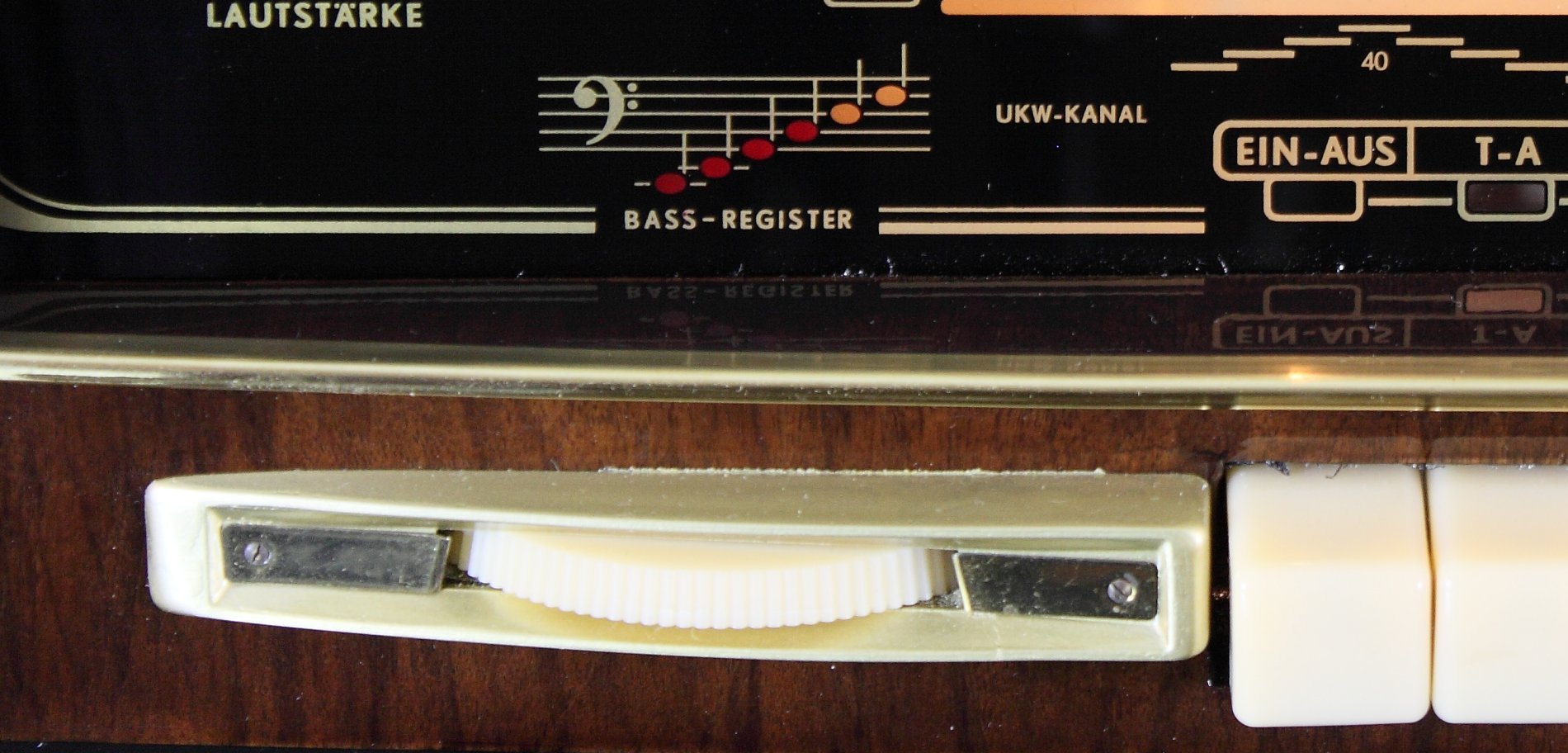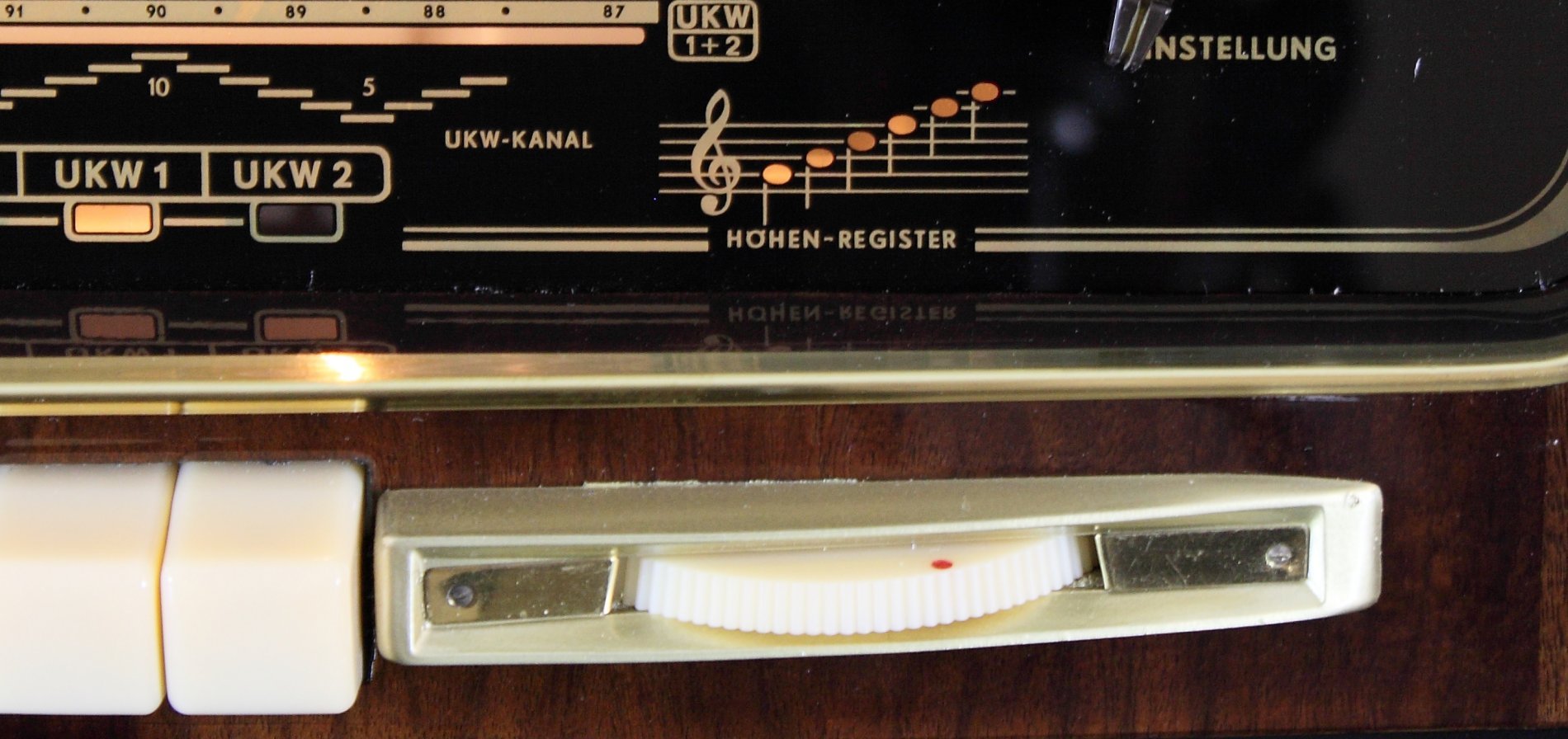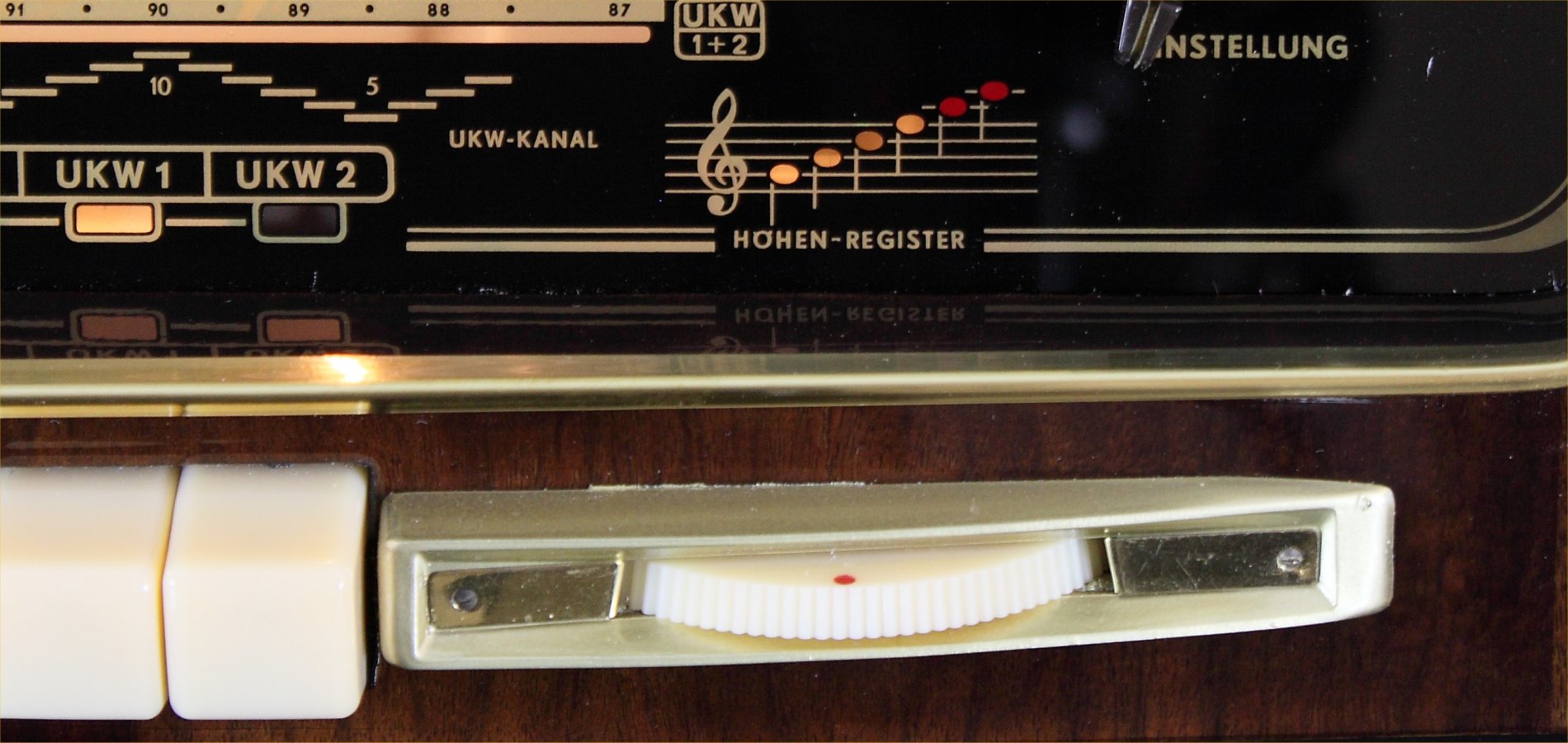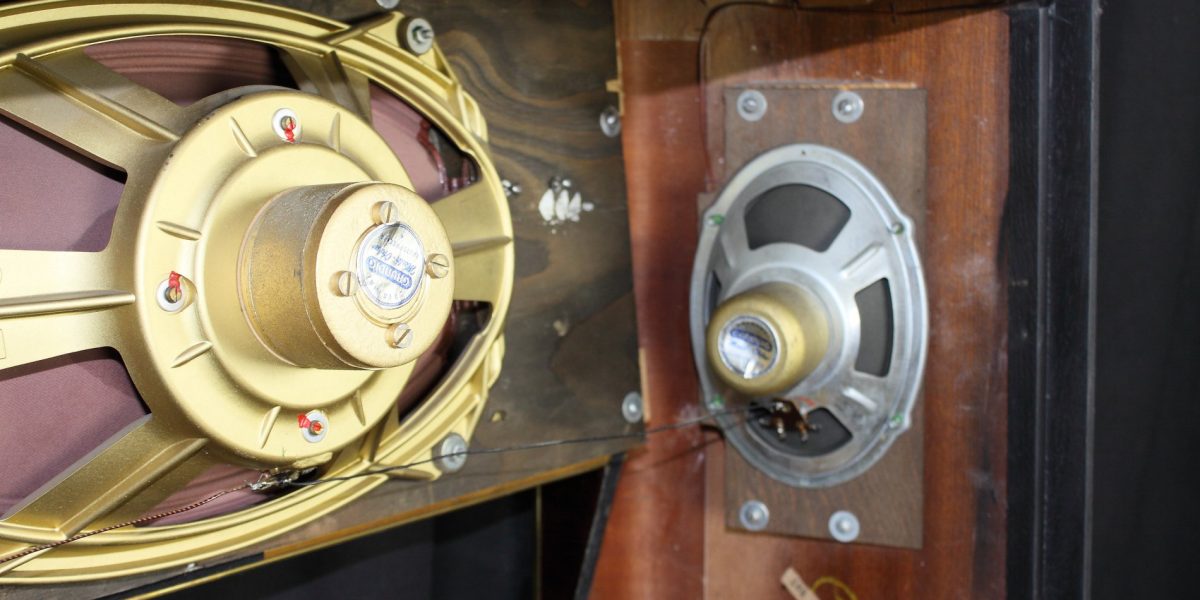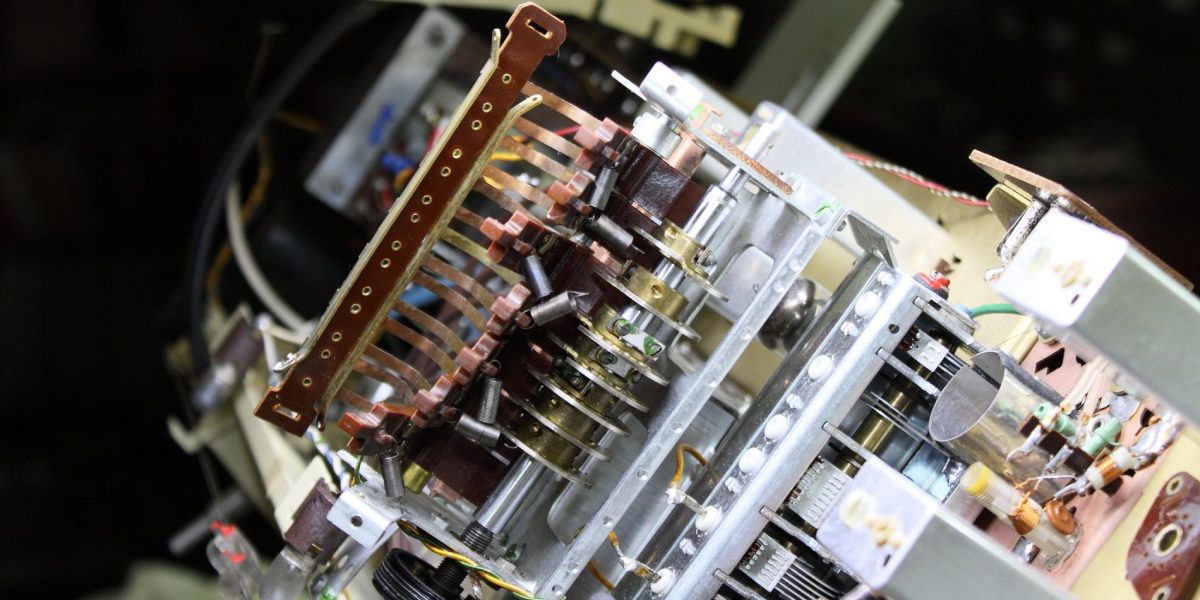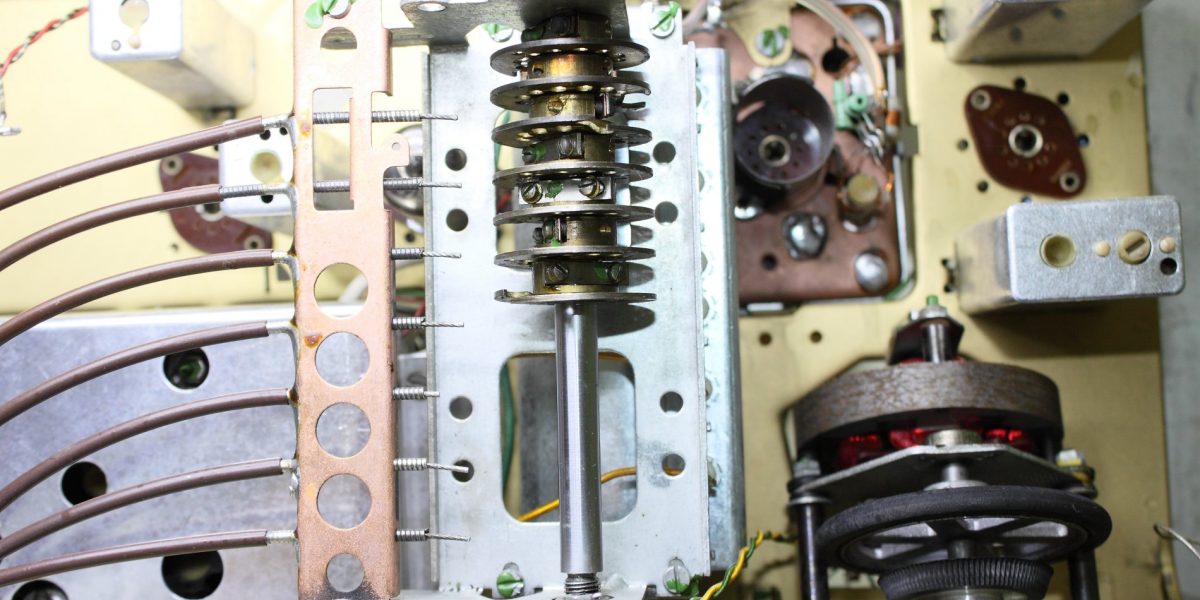 5040w/3d - cn
5040w/3d - cn
Grundig 5…
- by giovanni
Grundig 5040W/3D Motorized

Grundig 5040W/3D Motorized
The Grundig 5040W/3D is one of the best products made by this brand.Grundig used to produce different classes of devices. Those of series 1xxx are the cheapest, those of series 2xxx and 3xxx are medium-class and those of 4xxx and 5xxx are high-class.
Clearly, 5040W/3D belongs to the best class, and this is visible.
The radio section is very interesting from a technical point of view, as it is provided with an automatic search feature of the stored stations. The audio section, moreover, is totally satisfying from the acoustic point of view.
Let us focus on them separately.
Audio Section
The output stage is formed by a Telefunken EF804 tube as a pre-amplifier and a EL12 as a power section.
EF804 is a pentode appositely studied to have low noise and high gain. The pinout, different from any other pentodes, is designed in order to minimize the buzzing of strings.
The cathode is built in a peculiar material appositely imported from American International Nickel Corporation, which minimizes the microphonicity of the valve.
This valve was used in devices designed for professional studios... and in Grundig 5040W/3D
The EL12 is a pentode with 18W of anode dissipation, with a maximum output delivery of 8 Watts.
A tube with such features allows to have a class A output stage of noticeable power.
The efficiency of the four loudspeakers (three of which in alnico) is very high, so that the acoustic pressure delivered by this device is also really high.
In the photos and videos published on the website, two of these stereo configuration machines were used, one for each channel, during a Grundig device exposition.
The result is difficult to describe. The most common reaction was surprise. The audience didn't expect a couple of machines from 60 years ago to sound like that.
I hope to replicate this exhibition in some other public demonstration.
Radio section
The radio section in even more interesting technically.
The different receivable AM frequency bands are divided into several ranges, in order to increase noticeably the tuning precision of each station.
The subdivisions are the following:
KW1 - 50,8 to 35 mt (5,9 - 8,6 MHz)
KW2 - 35 to 24 mt (8,6 - 12,5 MHz)
KW3 - 24 to 16,7 mt (12,5 - 18 MHz)
MW1 - 585 to 318 mt (515 - 945 kHz)
MW2 - 321 to 185 mt (935 - 1620 kHz)
Bands LW, KW1, KW2, MW1, MW2, UK1, UK2 are provided with motorised memory.
The automatic memorisation is activated with the lever under the tuning knob. Then, the tuning knob is turned to the station that is to be memorised.
Now another band button can be pushed to memorise another station in the same way.
When the button of the previous band is pushed, a motor takes the index exactly to the station previously memorised on that button.
Beautiful to see and very useful.
The station research mechanism is complex and delicate to calibrate. Later on in the description, it will be further analysed.
Only Grundig 5040W/3D and 4040W/3D are provided with the automatic research system of the memorised stations.
Saba Freiburg is provided with automatic research of the stations, but it is a very different system, with different results.
-
BLUETOOTH
Embed Bluetooth Receiver upon requests
-
MULTI PLATFORM CONNECTION
Each radio can be equipped with a cable for connection to any digital device.
TUBESOUND IMPROVEMENTS
- Bluetooth receiver embedded - The unit can be equipped with a BLUETOOTH receiver powered directly by the receiver power supply. This makes it possible to control the amplifier from any external digital device as an IPAD, a Smartphone, or a sophisticated multimedia station. So you can hear your preferred web station or your lossesless file without cables on the room. Wireless Receiver can be equipped upon requests.
- Multi Platform Connection - A customized adaptation cable to connect any digital device as Iphone, Smartphone, Laptop, CD Player etc. can be provided with this radio. This special cable suits the different impedances between the modern equipment and the receiver. Furthermore the two stereo channels flow into one without increasing the load to the input unit.
HISTORY
1930 - At 22 years old Max Grundig begin a radio repair business.
1939 - The II world War start. Grundig works primarily for the Wehrmacht and repair of telecommunication equipment.
1945 - Immediately after the war, the demand for repair work was very great. Max Grundig built the first two Grundig appliances: the Tubatest tube tester and the Novatest testing device.
1947 - Start the sale of a kit radio, the Heinzelmann. The unit is the basis of success, sold more than 15,000 pieces.
1950 - Very high frequency (VHF) is introduced to Germany and places new demands on the industry. Grundig launches the 380 W on the market.
1952 - The first television channel starts up in Germany. After intensive research, Grundig launches the FS 080 onto the market. In the same year the first portable tape recorder Reporter 500 L is created.
1956 - After a lot of radio produced with progrssively high performances was produced the Concert Radio 5080 equipped with an equaliser, which has five controls and a visual display.
1965 - A new factory is established in Braga, Portugal. The Satellit 205 is one of many appliances in the Satellit series. This product marks the beginning of Grundig production of high-quality global receivers.
1970 - The Audiorama 7000 Hi-fi was produced, it has twelve dynamic speaker systems in one speaker.
1976 - The Reel Tape Recorder TS 1000 is equipped for semi-professional use.
1980 - The slim-line Hi-fi Tuner ST 6000 and the Monolith Hi-fi Dynamic Flat Top Antenna, which has 22 speaker systems, are two particularly popular appliances in the new hi-fi range.
1984 - After severe drop in sales Philips increased its stake in Grundig 31.6 percent and takes over the corporate management.
1997 - Philips pulls out of its involvement with Grundig.
2003 - The company files for bankruptcy.
2008 - Turkey's Koç Holding took full ownership of Grundig Multimedia B.V., the parent company of Grundig Intermedia GmbH in Nuremberg.
Courtesy of: Grundig
MAIN FEATURES
Year of production: 1954/56
Superheterodyne IF 468/10700
11 AM circuits
11 FM circuits
Wavebands: 1 x Long Waves, 2 x Medium Waves, 3 x Short Waves , 2 x FM
Loudspeakers:
1 elliptic wideband
1 electrostatic Tweeter
2 cone Mid/Tweeter
Dimensions (LHD): 706 x 444 x 318 mm / 27.8 x 17.5 x 12.5 inch
Net weight: 20.5 kg / 45 lb 2.5 oz
9 Tubes:
ECC85 EF89 ECC82 EF89 EM85 EBF80 EAA91 EF804 EL12

TONE CONTROL WITH LEVEL INDICATION
The tones control system is very efficient. Above the large tone control knobs there is a band that lights up gradually indicating the emphasis on the band on which it acts.
Interesting the high-tone control knob linked to two thin ropes. One of them is for the position indicator of the control itself, whereas the other changes the position of the ferrite in the MF transformers modifying the inclination of the transformer’s curve.
By doing so high tones were attenuated/accentuated even before getting to the BF stage. Tone control was usually put into effect with the potentiometer on the voltage amplifier stage
AERIALS
Inside the cabinet there is a dipole for FM reception and a ferrite rotating aerial for AM reception.
Ferrite aerial can be rotated from the outside to achieve a perfect tuning of the device in the AM.
In this picture see the rotation mechanism and the position indicator of the aerial.
The reception sensitivity with internal aerials is very good. This unit was in fact produced in a period when there were not many radio stations and those available fairly apart from each others.
Using an external aerial sensitivity is further increased.

TUNING CONTROL AND MOTORISED MEMORY
The tuning can be activated manually, as in every normal device, by turning the tuning knob with the automatic tuning switch turned to the right.
When it is turned to the left, instead, the station that is being played is “mechanically” stored.
For example, I have pushed the UKW2 button and I am listening to a station in 89,90 MHz.
By pushing one of the other harmony buttons, the motor takes the index on the station that was last played.
By pushing the UKW2 button again, the motor takes the harmony exactly to 89,90 MHz.
This operation can be repeated for any station on the UKW1, UKW2, MW1, MW2, KW1, KW2 and LW bands.
The automatic memorisation is obtained with a series of clutches, springs and steel rods and levers which require an accurate calibration. Once calibrated and lubricated, the mechanic system is totally reliable and solid. There is no danger of slippage as there are sprockets, and clutches are made of high-quality flexible steel blades.
A real masterpiece of mechanical engineering.
TUNING INDICATOR
The magic eye has of course been replaced.
LOUDSPEAKERS
As indicated in the description at the beginning, there are four loudspeakers. They are placed on the three sides of the device.
The main cone is a huge elliptic broadband which measures.... it is built in solid alloy and has an alnico magnet.
The dimensions of the magnet are impressive and the weight of the whole loudspeaker reveals its robustness.
Actually, it has to sustain the weight of the big EL12.
The cone curvature is of the exponential type, as befits a super-high-quality broadband.
The frontal electrostatic tweeter covers the very-high frequencies range.
On the two sides are two Mid-Tweeter produced by Grundig, also very efficient.
The final result is, of course, a very powerful sound with very deep and fast bass.
The medium range is also very clear and the voices are credible and in evidence, never imprecise.
Trebles are brilliant but sweet, not strident.
A remarkable musicality for a radio.
CONTROL PANEL
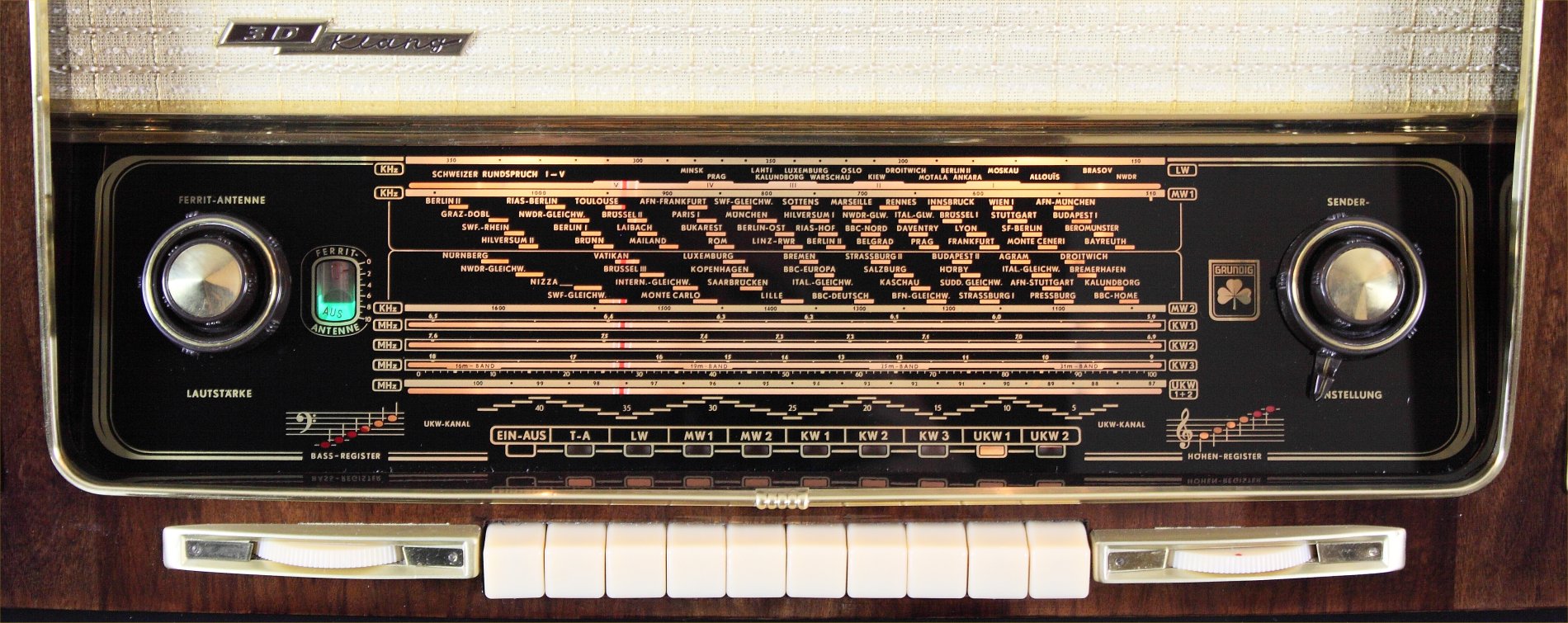
The first knob we find is that of the Volume with integrated loudness.
Coaxial to it is the rotation knob of the ferrite aerial for MW and LW.
The position of the ferrite aerial is visible, see-through view, is the windowpane of the magical eye.
The latter indicates the perfect tuning of each station.
Going further on the display, we can see the AM and FM bands scales.
Further on the right is the tuning control knob.
Coaxial to it is the lever which turns on and off the motorized research of the preset stations.
Below the tuning-dial we find, first of all, the bass-tones control knob.
Then, we see the long "piano-keyboard", the keys of which have this purpose, respectively:
On/Off
Aux-in;
Long Waves
Medium Waves 1, Medium Waves 2
Short Waves 1, Short Waves 2, Short Waves 3
FM1, FM2
Finally, there is the treble control knob.
Above the tones knobs, the respective indicators are visible.i
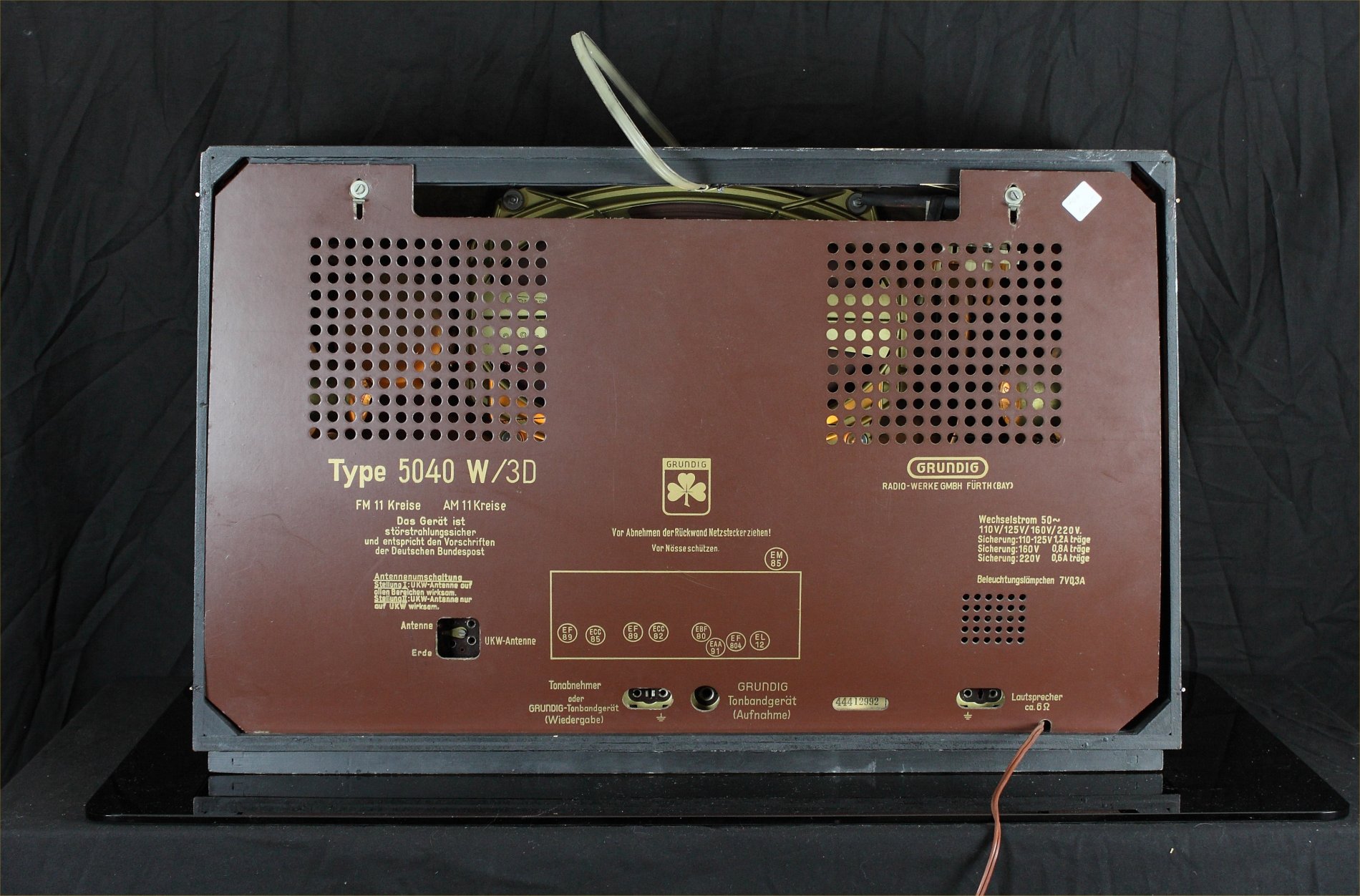
REAR SIDE
Output for external speakers.
Socket for recorder (tonbandgerat).
Turntable input (Tonabnehmer)
AM and FM aerial inputs and ground socket.
RESTORATION WORKS
BONUS TRACK - GRUNDIG PLAY THEREMIN
THE USUAL AMAZING LAST IMAGE
